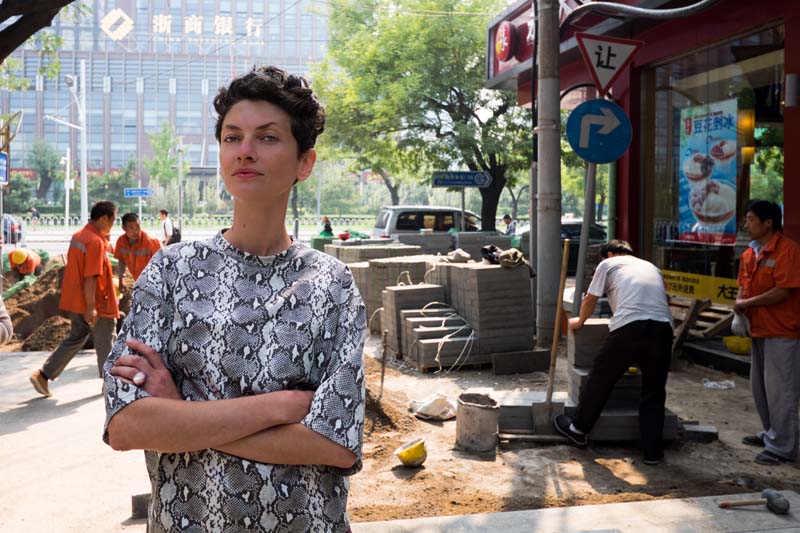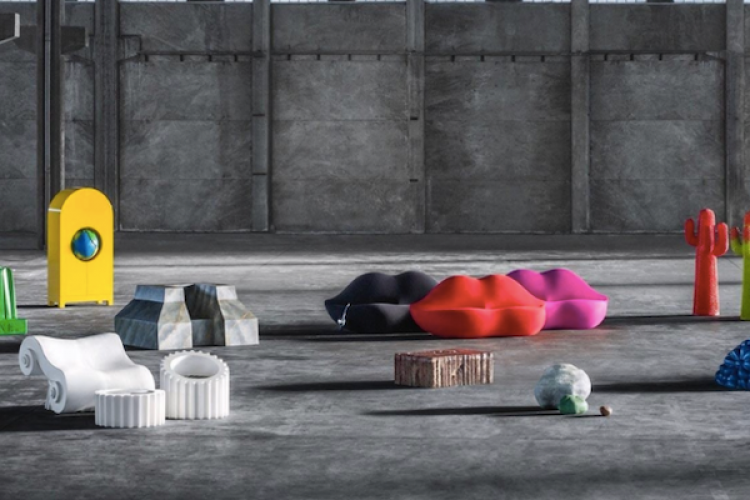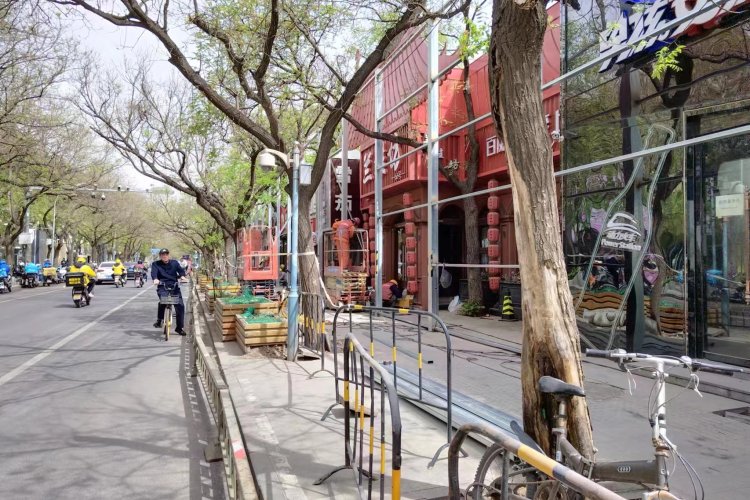Redevelopment and Tumult: Q&A With Former Beijing Design Week Creative Director Ahead of Urbanism Talk, Mar 1
As many an expat (including yours truly) bemoans the ongoing "beautification" of Beijing, Beatrice Leanza's response has been more nuanced courtesy of insight into the city's composition that she honed during her time as creative director of Beijing Design Week between 2012 and 2016.
During her four-year stint at the helm of the annual architecture and design festival, she convened several panels, meetings, and action plans for small-scale urban renewal. Leanza, the designers, and residents all hoped that those efforts would address infrastructure issues without gauging neighborhoods like Dashilan of their character.
Now with even more renovations penned for 2018, Leanza tells us more about Beijing's redevelopment prospects, a topic that she will discuss at length at her upcoming Mar 1 talk on "transitional urbanism" at the European Union Delegation to China.
Though redevelopment in Dashilan has gotten a pretty positive response, the same can’t be said about the streetside chai-ing that took place throughout 2017. Some people think the hutongs needed to be cleaned up, but others think it's killing the city’s character. As an expert on urbanization, how do you feel?
I don’t have a simple answer. And I also think it’s too early to judge the extent of these measures. Hutongs have been bludgeoned throughout the decades. I do believe there are positive aspects to it. Some of it has medicated the messiness of the conditions. But of course, there have also been negative responses to the relocation of residents and the doctoring of spaces. There is a top-down nature to these measures that treat everything equally when the hutongs are, by definition, characterized by diversity. One hutong can be completely different from another in terms of architecture, infrastructure and so on, even when they’re in close proximity.
Tell us more about what can we expect to hear at your presentation, and how it ties into Beijing's current tumultuous period of urbanization.
Normally, whenever you hear about urbanism in China, the first image that springs to mind is heavy construction. The connotations aren’t so positive, so my talk is an attempt to highlight what I believe to be a new phenomenon: practitioners and architects trying to engage with intangible aspects of urbanizing.
I want to talk about urban making that is really no longer regimented from top-down forms of planning. It’s about how individuals and practitioners and studios have geared up to tackle the issues that concern the actual residents, the population living in Beijing. Particularly around the hutongs. We have focused on this quite a bit during Beijing Design Week, especially since 2013, and have tried to use this platform to motivate dialogue between planners and urban residents.
Tell us more about those dialogues.
We worked in the context of Dashilan and also Baitasi, which is closer to Beijing’s financial district [Leanza is pictured in the latter location above at the height of its revamp in 2015]. We had different degrees of success, but I still believe there are positive practices that came out of it. We tried to engage with the residents about what daily challenges they were facing like lack of public infrastructure and facilities.

How did those interactions play out exactly?
Because Beijing Design Week is a large-scale governmental event, it allowed us to enter into dialogue with local community centers that were already present and ready to work with the residents. These type of stakeholders ranged from local developers to administration offices that take care of everyday communal issues. Together with professional designers and architects, we would plan and map out areas of intervention where there was lack of specific public infrastructure or facilities, and we would organize internal meetings and workshop sessions, taking into account the point of view of the residents, and so on. It was not about parachuting in to impose ideas. Then over the course of four editions of Beijing Design Week, we worked to build on what we had achieved in this process. We had these pilot programs that were really based on responding to specific challenges at specific sites, rather than work done in the abstract. We felt it was fruitful and opened up this kind of conversation for the first time.
Tell us more about the benefits of that.
By being collaborative and public in nature, the redevelopment efforts there raised the issue within a broader public debate well beyond the confines of provisional discourse. I think, for the first time, it made the process more inclusive for local residents. Not all of what was proposed and discussed could be implemented, it wasn’t all successful, but I think it worked well overall.

I think, no how balanced the changes are, some Beijingers will always prefer the bohemian vibe of alleys like Fangjia Hutong before it was recently bricked up.
I think that’s a bit of a western construct. Aside from their specific look, what the hutongs are truly all about is communal life. Thirty years of urbanizing in Beijing have meant bulldozing, road building, and infrastructure implementation. Now there’s an attempt to rediscover the microenvironments of hutong life, to preserve their physical look, and so on, which we explored at Beijing Design Week. It’s a wider and more integrated mindset.
I’m not sure what you mean by bohemian, exactly. The hutongs are living environments that change and are dynamic. They are not hollow shells in the city, but living communities. I’ve been here for 15 years, and I can remember when Houhai only had two bars, and many foreigners were upset when more businesses began to open and it began to change. Maybe there is something else that should be plugged into this context, instead of focusing solely on leisure. We could instead think about more integrated needs and making everything coexist. There are negative examples of course, Like Nanluogu Xiang and parts of Houhai, but for the most part, I see the hutongs as a testing ground for the course of modernization in China. They are part of a constant fluctuation and negotiation between making the city contemporary and preserving history.
Click here for more information on Beatrice Leanza's talk, slated for Mar 1 at 7.30pm.
More stories by this author here.
Email: kylemullin@truerun.com
Twitter: @MulKyle
Instagram: mullin.kyle
Photos courtesy of Nicola Longobardi, Alessandro Digaetano




